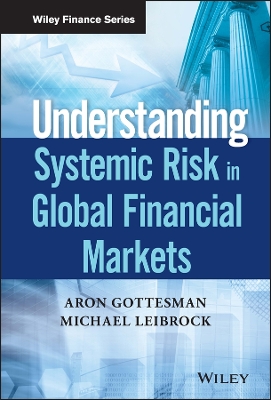Wiley Finance
2 total works
Understanding Systemic Risk in Global Financial Markets
by Aron Gottesman and Michael Leibrock
Understanding Systemic Risk in Global Financial Markets offers an accessible yet detailed overview of the risks to financial stability posed by financial institutions designated as systemically important. The types of firms covered are primarily systemically important banks, non-banks, and financial market utilities such as central counterparties. Written by Aron Gottesman and Michael Leibrock, experts on the topic of systemic risk, this vital resource puts the spotlight on coherency, practitioner relevance, conceptual explanations, and practical exposition.
Step by step, the authors explore the specific regulations enacted before and after the credit crisis of 2007-2009 to promote financial stability. The text also examines the criteria used by financial regulators to designate firms as systemically important. The quantitative and qualitative methods to measure the ongoing risks posed by systemically important financial institutions are surveyed.
- A review of the regulations that identify systemically important financial institutions
- The tools to use to detect early warning indications of default
- A review of historical systemic events their common causes
- Techniques to measure interconnectedness
- Approaches for ranking the order the institutions which pose the greatest degree of default risk to the industry
Understanding Systemic Risk in Global Financial Markets offers a must-have guide to the fundamentals of systemic risk and the key critical policies that work to reduce systemic risk and promoting financial stability.
Derivatives Essentials is an accessible, yet detailed guide to derivative securities. With an emphasis on mechanisms over formulas, this book promotes a greater understanding of the topic in a straightforward manner, using plain-English explanations. Mathematics are included, but the focus is on comprehension and the issues that matter most to practitioners—including the rights and obligations, terms and conventions, opportunities and exposures, trading, motivation, sensitivities, pricing, and valuation of each product. Coverage includes forwards, futures, options, swaps, and related products and trading strategies, with practical examples that demonstrate each concept in action. The companion website provides Excel files that illustrate pricing, valuation, sensitivities, and strategies discussed in the book, and practice and assessment questions for each chapter allow you to reinforce your learning and gauge the depth of your understanding.
Derivative securities are a complex topic with many "moving parts," but practitioners must possess a full working knowledge of these products to use them effectively. This book promotes a truly internalized understanding rather than rote memorization or strict quantitation, with clear explanations and true-to-life examples.
- Understand the concepts behind derivative securities
- Delve into the nature, pricing, and offset of sensitivities
- Learn how different products are priced and valued
- Examine trading strategies and practical examples for each product
Pricing and valuation is important, but understanding the fundamental nature of each product is critical—it gives you the power to wield them more effectively, and exploit their natural behaviors to achieve both short- and long-term market goals. Derivatives Essentials provides the clarity and practical perspective you need to master the effective use of derivative securities products.

